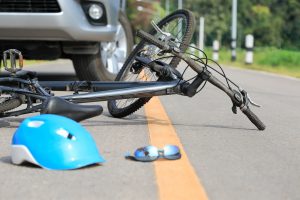Can Pedestrians Be Held Liable in Car Accident Cases?
Can Pedestrians Be Held Liable in Car Accident Cases?
In the US, motor vehicle accidents are common, and result in non-fatal as well as serious injuries, and even death. According to the first estimate by the National Safety Council (NSC), there were a total of 38,800 motor-vehicle deaths in 2019, and around 4.4 million people were injured seriously enough to require medical attention.
Road accidents involving two vehicles are common, but those involving pedestrians or bicycles are equally so. Although in most car accidents, the drivers are held responsible for causing collisions.
In accidents involving pedestrians, it is not always the driver’s fault.
Here is what you need to know about when pedestrians can be held at fault for car crashes and what you can do about it.
Let’s start with the basics.
- What Is a Personal Injury Claim?
A personal injury claim is a civil lawsuit involving a plaintiff seeking monetary compensation from the defendant for injuries as a result of wrongful conduct. Motor vehicle accidents, slips and falls, medical malpractice, assault and battery, and dog bites are some of the common types of personal injury claims. This law may change from state to state.
The state of Illinois has several different tort laws under which you can file a claim. However, you have to file the lawsuit within two years from the date of the accident. However, you should check with a personal injury lawyer or a car accident attorney in Illinois to see which statute of limitations applies to your claim.
The state also has comparative fault rules, which the courts use to calculate damages if the plaintiff is partly responsible for the accident. The courts are likely to use this rule in car accident claims involving pedestrians as sometimes, both parties can be responsible for the accident.
- Car Accidents Involving Pedestrians
Usually, when a car or road accident involves a pedestrian, he/she is likely to suffer the maximum injuries or damage. Even at a slow speed, an average car can cause grave damage to the on-foot traveler. As a result, pedestrians often need immediate medical attention. Even the slightest delay in treatment can result in a permanent disability or worse.
Here are a few common injuries pedestrians suffer in a car accident.
- Brain injuries
- Bone fractures
- Damage to or loss of a bodily organ
- Spinal cord and nerve damage
- Dismemberment
- Amputation
- Face or bodily disfigurement
- Permanent disability
- Damage to or loss of a limb
- When Can Pedestrians Be Held Liable in Car Accident Cases?
It is a common belief that pedestrians have the right of way, and so you can’t hold them accountable for a road accident. However, this may not always be the case.
By law, both the driver and the pedestrian have to practice reasonable care on the road. In other words, the court can hold either party responsible (entirely or partly) for the accident and subsequent injuries.
- What Is a Pedestrian?
A pedestrian is a person who is either on foot or is using human-propelled means to walk on the road or pavement. However, most state laws don’t consider a cyclist as a pedestrian as they have to follow the rules quite similar to the ones for motorists.
But, anyone using a wheelchair, invalid tricycle, and motorized quadric-cycle due to a physical disability may be considered a pedestrian.
- When Can a Pedestrian Be Held Liable in a Car Accident?
Just like drivers have to exercise precautions such as following signals and honking, pedestrians have a similar duty of care when walking near roads and streets.
Here are a few common scenarios in which the court may consider a pedestrian at fault.
- Jaywalking, which often involves crossing a street or walking into one without any regard for the road traffic.
- Walking outside of a crosswalk even though it is available to cross a street.
- Crossing the street or road against a signal.
- Leaving the safety of roadside pavement to cross a street without looking around and entering the path of oncoming vehicles.
- Soliciting business or contributions on the roadside.
- Walking on the areas such as bridges, highways, or interstates, where pedestrians have no legal access.
- Walking onto a street or crossing one when intoxicated or otherwise incapacitated.
- Throwing objects on the street or in the lane of travel intentionally or negligently.
These actions will not only put you or your loved one in grave danger, but also lead to fines from road authorities.
- Who Has the Right-of-Way at a Crosswalk?
In most states, pedestrians often have the right-of-way when crossing a street using a crosswalk. In short, the vehicles must stop and let the pedestrian on the crosswalk pass.
Furthermore, if a vehicle has stopped to allow a pedestrian using the crosswalk to pass, the vehicles approaching from behind also need to stop. If not, the drivers will be considered at-fault, should an accident occur.
However, the right-of-way has exceptions. For example, if you (as a pedestrian) fail to use the crosswalk (even if it is present) to pass the street, the driver will have the right-of-way. As a result, the pedestrian will be at fault, should an accident happen. The pedestrian cannot claim compensation for the injuries suffered in such cases.
- What Happens If the Pedestrian Is at Fault?
The personal injury laws governing pedestrian accidents vary from state to state. Usually, there are two sets of laws, including pure contributory negligence and comparative fault, which states follow.
The truth is, it is highly unlikely that the pedestrian alone was responsible for the accident unless, of course, they intentionally wanted to hurt themselves. Some states, including Alabama, Maryland, North Carolina, Virginia, and Washington, D.C, follow a set of rules called contributory negligence.
It prevents a pedestrian from recovering any damages even if they have played a minor role in the accident. In most other states, you can still get compensation if you are a pedestrian who’s partly at fault. However, the extent of your fault will decide the amount of compensation you can get, which brings us to the next point.
- What Is Comparative Fault?
Most states, including the state of Illinois, follow their own version of comparative fault or comparative negligence rule. So, if both the driver and the pedestrian share the blame for the crash, the compensation is split according to the percentage of their fault. The jury decides who bears what percentage of the fault for the accident.
The comparative negligence system comes with the following two variants:
- Pure Comparative Negligence
In this system, the jury will split the damages according to the percentage of fault. For example, if the jury finds a pedestrian 20% guilty and the driver 80% guilty in an accident, and the pedestrian’s medical bills are worth $100,000, the pedestrian will get only $80,000 from the driver.
- Modified Comparative Negligence (50% or 51% Bar Rule)
In this system, the jury will split the damages according to the percentage of fault, but to a certain limit. Usually, the limit is 50%. However, the state of Illinois follows the 51% rule.
So, in the above example, if a pedestrian is found to be 51% or more at fault, the jury will decide in favor of the driver. In other words, the pedestrian will not receive any compensation.
- How Do You Prove a Pedestrian’s Fault in a Personal Injury Claim?
As a leading personal injury lawyer in Illinois, we often have to face this question. The truth is, the course of legal action will vary from case to case. However, there are a few common ways that will help you prove that the pedestrian was at fault.
- Witness testimony can play a critical role in deciding the fault of a pedestrian.
- You can also get footage from security cameras of nearby businesses or even the street.
- The dashcam or data recorder in your car may also have valuable footage that will help make your case.
- Careful forensic analysis of the accident site for skid marks, location of debris, and other clues can help you determine the fault of a pedestrian.
- Do You Need an Illinois Car Accident Lawyer In a Pedestrian Accident?
Whether or not your claim goes to trial, having an experienced lawyer by your side is always a good idea. Your attorney will prepare your defense by contacting eyewitnesses, drafting your response to the media letter from the plaintiff, and even helping you gather scientific evidence.
However, make sure to hire an experienced personal injury attorney in Illinois with an excellent track record. Remember, your very future may be at stake here. So, you need someone you can trust and feel comfortable working with.
Wrap Up
As you can see, the driver alone is not always responsible for an accident involving a pedestrian. The pedestrian can also be at fault. If that is the case, it will have a huge impact on his/her personal injury claim. Hopefully, this post will help you understand when, how, and why, a pedestrian can said to be at fault and what can be done about it. If you still have doubts, feel free to contact us for help!
At Dixon Law Office, we are in the business of helping our clients get the justice they deserve. We do this by listening to our clients and then fighting hard to get them the compensation they deserve.
If other lawyers have told you “You have no case,” call Dixon Law Office. We can evaluate your case and tell you how we can help you. It is what we do for you. Because when everything goes wrong, we make it right.


